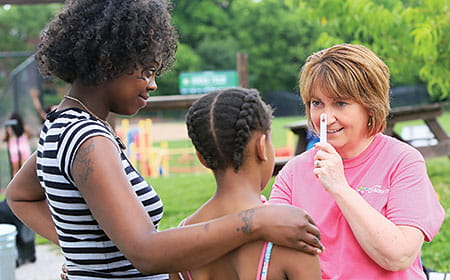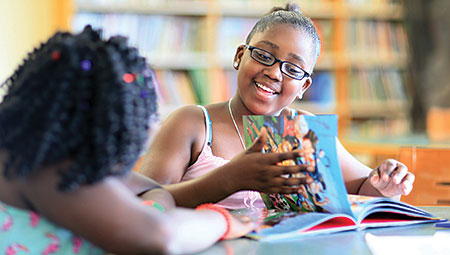Making Vision Care Accessible to All

Carol Weinel screens a child for eyesight problems.
If your child has a stomachache, you’ll probably know. If she falls and breaks an arm, you’ll certainly know. But if your child has blurry vision, you might not know.
"Vision doesn’t hurt, and kids don’t realize they’re not seeing what others are seeing,” explains Carol Weinel, vision screening coordinator at the Abrahamson Pediatric Vision Screening Program at Cincinnati Children’s.
Weinel’s job takes her to schools and health fairs to identify kids who need vision care.
Tanya Boyd met Weinel at Hope Fest, a health fair in Washington Park, where she had her daughter’s eyes checked. It’s lucky she did. Akeila, 11, failed the vision screen. An eye exam at Cincinnati Children’s confirmed she needed glasses.
Before the vision screening, Boyd says, Akeila’s grades were starting to slip. “She got glasses just in time. Her final exams were great.”
Weinel screens for many eyesight problems, but her most urgent concern is amblyopia, a condition in which the eye and brain do not work together properly. Because the affected eye does not see clearly, the brain relies on the strong eye. The weak eye keeps getting worse.
The eye can be strengthened, if treatment starts by age 8 − which is why it’s so important to find amblyopia early.
Weinel frequently collaborates with another community resource, Oyler OneSight Vision Center, a partnership of Cincinnati Public Schools, Cincinnati Health Department and OneSight/Luxottica.
Children who fail vision screening can be taken to Oyler School for a thorough eye exam. Those who need glasses can choose a frame and have the glasses made and delivered to them at their school.




